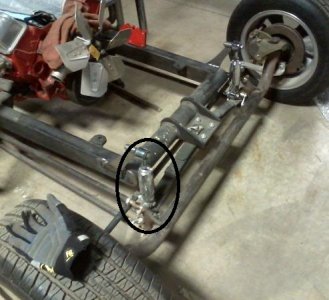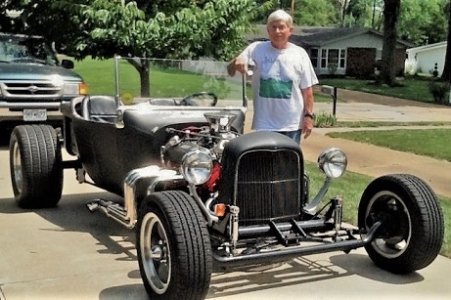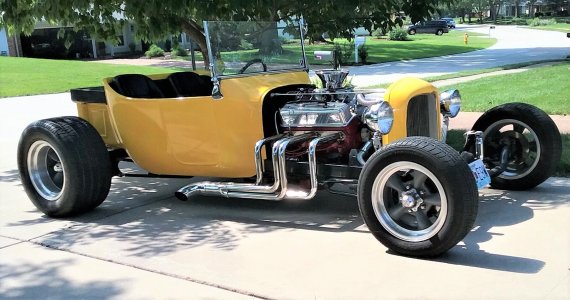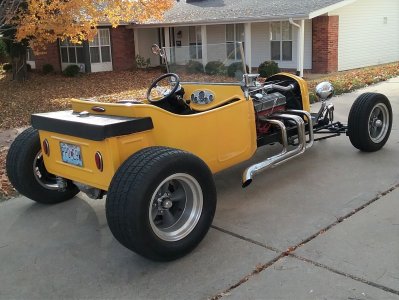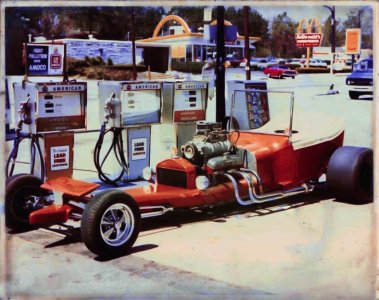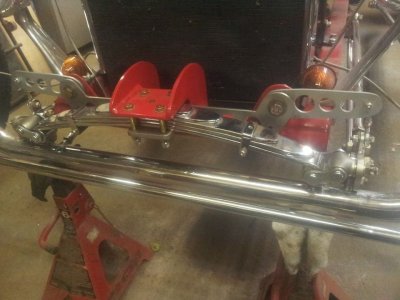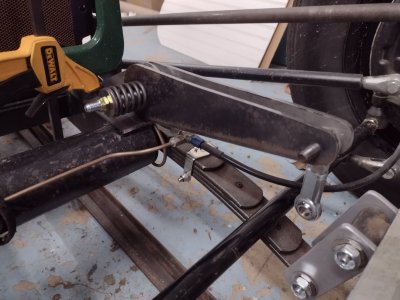Nice job Hackerbilt! What did you use for friction pads? Also, can you elaborate on the Chevy door check spring? No rush. I haven’t decided what I’m going to do on mine yet. It has chrome hydraulic shocks on it, but they are at a 45* angle, so I’m not sure how effective they are. Re engineering stuff and trying to retain the nostalgia of the past can be challenging.
Was kinda busy so just now getting back to the forum. I thought I had a clear picture of the back of the shock setup but it's not so easy to find unfortunately.
Easy to describe the setup anyway.
There is a flat bracket (red) welded to the tube crossmember on either side.
There is a full width bracket (silver) that crosses from one side to the other to allow for a working double friction disc setup.
The shock arms are sandwiched between them with rubber friction discs on either side of the shock arms...so 4 discs in total.
They were hole-sawed from the sidewall of an old bias/ply tire.
The center bolt of each shock is long enough to have an old Chevy door check spring (like a valve spring, which could also be used just as easily) added to the rear of the assembly.
This allows the shock bolts to be preloaded with tension (using Ny-loc style nuts to hold preset) and as the rubber discs degrade over time they still keep a decent amount of pressure applied to the discs and arms.
The links to attach the shocks to the axle brackets are male and female Heim joints screwed together.
I used this for two summers with no adjustment needed and then traded the car off (mistake) for more comfort.
I doubt the new owner has ever messed with it since.
It worked really well and completely eliminated the tramping (pogoing) of the front tires and looks pretty good. Doing it again I would make the arms have a smaller profile with smaller holes just for looks. They seem a little clunky.



